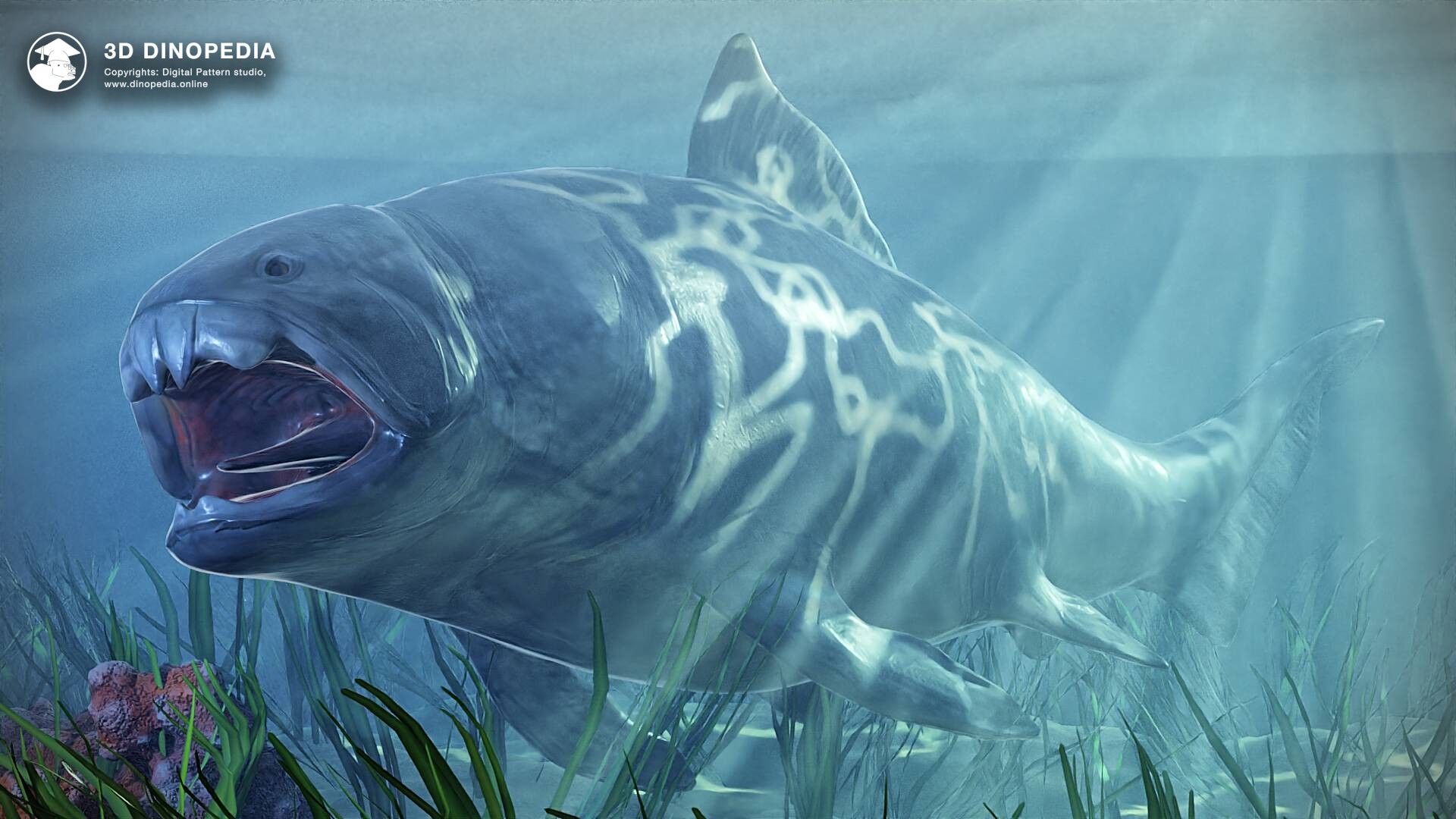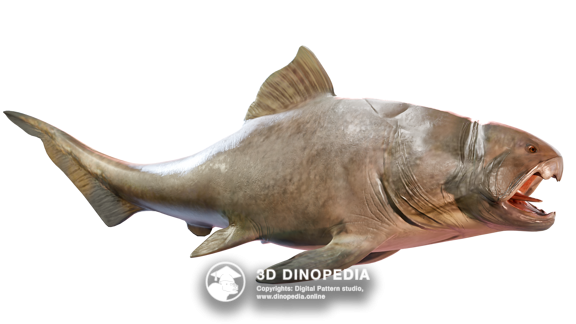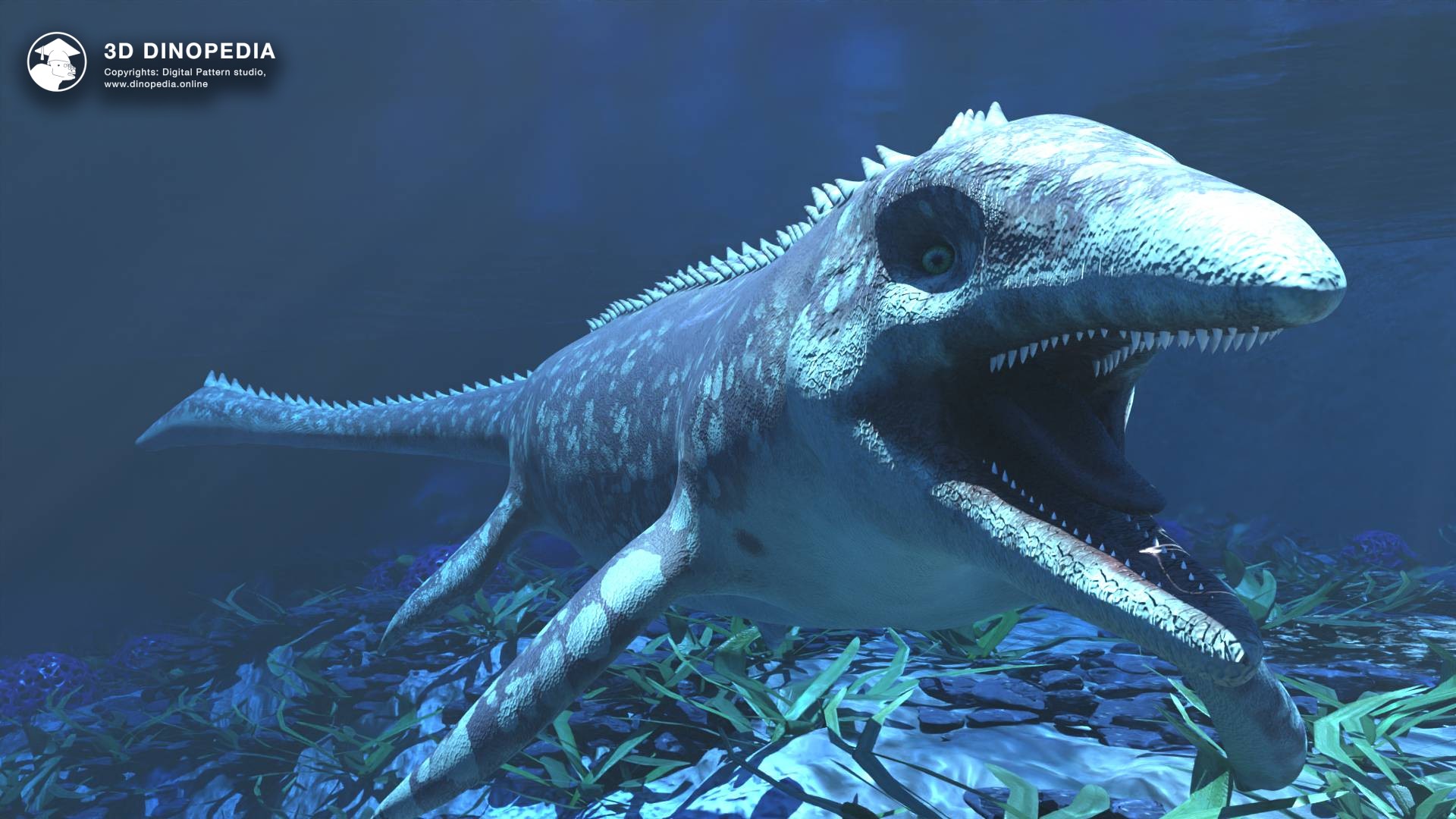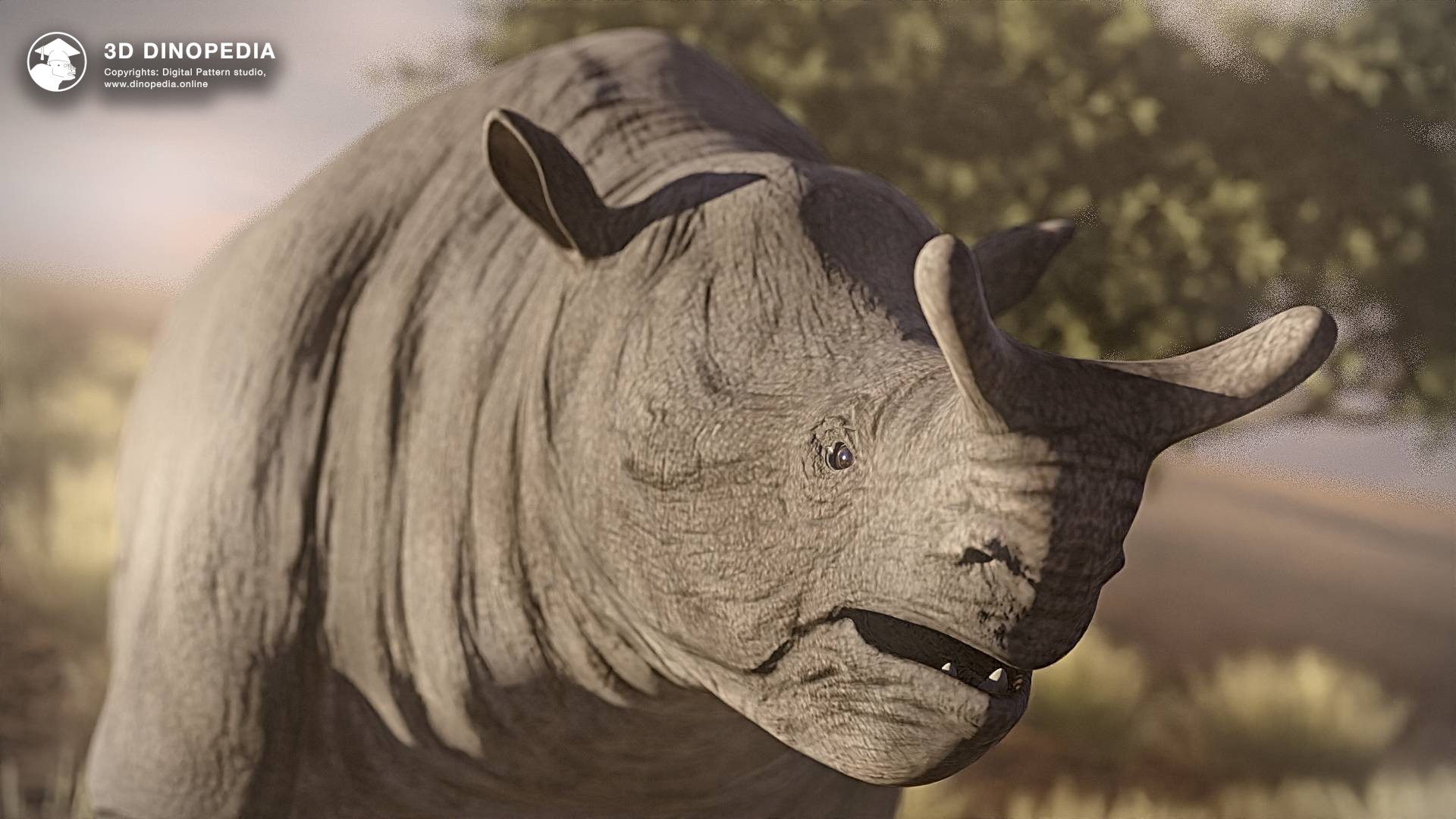A Brief History of the Shortened Dunkleosteus
20.09.2023 14:42
6058 views

Late Devonian period. The murky waters of the ocean were faintly lit by the rays of the primordial sun. With its eight thin legs moving in turn, a small eurypterid (sea scorpion) diligently searched through the ocean floor sediment for something exciting, interesting, and, of course, delicious.
With a noisy splash, a small creature swam by. What was it? The eurypterid paused for a moment, but it seemed there was no real reason to worry. These were merely conodonts—worm-like vertebrates just a couple of centimeters (0.8 inches) long. Such tiny creatures couldn't pose a significant threat. The ancient arthropod quickly realized this and, completely ignoring the small jawless conodonts, continued its important work.
A massive shadow loomed over the eurypterid. An incredible monster emerged from the depths of the primordial ocean, its body glittering as it reflected the rare rays of sunlight off its enormous bony plates. Its mouth opened slightly, revealing sharp plates that acted as teeth. The monster's large eyes looked around, searching for potential prey.
Fortunately, the eurypterid was too small for the gigantic predator. The frightening, unprecedented fish eventually disappeared back into the mysterious mist of the Devonian sea.
So, what monster did the ancient invertebrate see? It was an ancient armored fish—Dunkleosteus. This fish has gained immense popularity due to its genuinely terrifying appearance: sharp cutting plates, unprecedented armor, and enormous size.
During the Devonian period, there were no gigantic mosasaurs, pliosaurs, or 15-meter-long (49-foot) megalodons. The largest ancient sharks were barely more than a couple of meters (7 feet) long. Against this backdrop of relatively small fish, the appearance of Dunkleosteus was a momentous event. Initial estimates suggest that this fish could have reached lengths of up to 9 meters (30 feet)—the length of a bus! Compared to its contemporaries, Dunkleosteus was a true giant. However, was Dunkleosteus really that large, and how do we know what its size was? This question is much more complicated than it first appears.
One might think it's simple—take a skeleton, measure it with a tape measure, and find out the length of the ancient fish! But the problem with studying Dunkleosteus lies in the fact that the animal had a cartilaginous skeleton. Notably, this was not unique to this species: all early fish of that time had a cartilaginous skeleton. Sharks and their relatives are rightly classified in the group of "cartilaginous fish." Acanthodians (Acanthodii)—ancient torpedo-shaped fish with multiple fins along the belly—also had a cartilaginous skeleton. In armored fish, the skeleton consisted only of cartilage. And even for the earliest fish classified as having "bony" skeletons, the skeleton had only partially been replaced by real bone.
It's a different story with armor. Armored fish, or placoderms (Placodermi), as they are called, had large bony plates that made up their "armor," providing not only good protection but also leaving their indelible mark in the fossil record in the form of petrified bony plates. Thanks to the discovery of this armor, we know quite a bit about armored fish. But that only provides information about their external covering. What was inside remains a big question.
Some armored fish, such as Bothriolepis, were almost completely covered in armor. You could say they were a sort of mix between a turtle and a mermaid. The head, more than half the body, and even their fins were located under the armor! With such a structure, even if the tail is not preserved, it's not difficult to estimate the length. However, Dunkleosteus is a different story altogether.
Dunkleosteus belongs to a different category of armored fish. If Bothriolepis and its relatives from the "Antiarchi" group can be compared to ancient knights in monolithic armor, then Dunkleosteus and its kin are closer to warriors in chainmail. These animals were active and agile predators. Armor covered only the body and the front part of the torso. They had a special joint at the neck that allowed them to lift the front part of the head, widely opening the mouth. For this reason, they are called "Arthrodiri," which translates to "joint-necked." But that's not particularly important for our topic. What is much more important is that the armor was only at the front and covered only a small part of the fish. Science knows of more or less intact examples of small Dunkleosteus armor. From fragments of plates of larger individuals, the gigantic armor of the largest fish has been reconstructed. But what lay beyond that armor remains a mystery.
So what to do? How can we then determine the length of Dunkleosteus? And if the skeleton has not been preserved, where do the data on the fish's length even come from?
When paleontologists lack information about a specific animal, they employ a tried-and-true method—borrowing information from relatives of that species! For example, comparing Dunkleosteus with sharks—which were thought to be fairly close relatives of armored fish—led to the appearance of a 9-meter-long fish. However, later, actual prints of armored fish, or arthrodires, were found. This was certainly not Dunkleosteus itself, and the found skeletons belonged to smaller species measuring up to several tens of centimeters, but this was a more reliable model for the ancient fish. If we "scale up" the known arthrodire prints to the size of Dunkleosteus, we get a slightly more modest length—6 meters. This hypothetical Dunkleosteus became more "compact" and, at the same time, more muscular.
However, in 2023, a new article was published that described groundbreaking research that allows us to see the evaluation of the length of fossilized fish in a completely different light. Paleontologist Russell Engelman noted that even if we take a few closely related fish of very different sizes, they will have completely different body proportions. It may happen that smaller fish will be much more elongated, and larger fish from the same family will be much shorter and taller. In other words, body proportions strongly depend on size. Therefore, we cannot simply take a smaller fish and, by enlarging it, say that this is what some giant ancient relative would have looked like. So what to do? A clear relationship needed to be found between specific, known parts of the body that could be observed and measured and the overall length of the fish. And such a relationship was discovered!
Russell Engelman found that the length of the fish is closely related to the distance from the rear edge of the eye socket to the rear edge of the gill cover. That is, if we measure this distance and apply a certain formula, we will obtain a scientifically calculated length. This relationship was confirmed by comparative studies of a number of modern fish.
Armed with this knowledge, we can now predict the length of any fish whose head has been preserved. And Dunkleosteus fits the bill perfectly! And so, Russell set out to study these legendary animals...
I hope this helps you understand the article better!
The result of Russell's research is that our understanding of the true size of Dunkleosteus has changed forever. It turns out that it was considerably taller and shorter in length, with the largest fish reaching only 4 meters and 10 centimeters (about 13.5 feet). However, this doesn't make it any less interesting. It remains the largest fish of its time and the main predator of Devonian seas. It is also still considered to have jaws as powerful as an alligator's and an appetite larger than a lion's (it is estimated that it ate over 23 kg of meat per day). Most importantly, we now have an even better understanding of its real history, which is always the goal of paleontologists.
For more interesting data on Dunkleosteus, as well as a 3D model of this fish, you can check out the app "3D Dinopedia: Paleontology."
You can find details about this research in the scientific article:
Russell K. Engelman. (2023) A Devonian Fish Tale: A New Method of Body Length Estimation Suggests Much Smaller Sizes for Dunkleosteus terrelli (Placodermi: Arthrodira). Diversity; 15 (3): 318.
Discussions







{{ count }} comments
You must login to write a comment